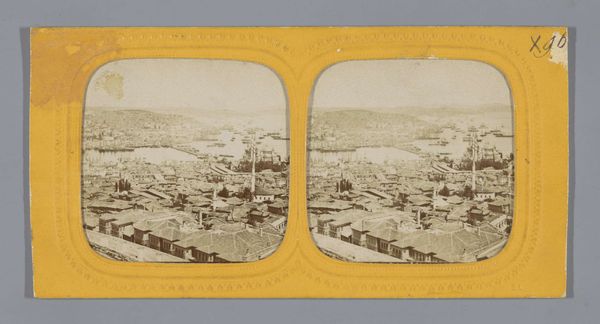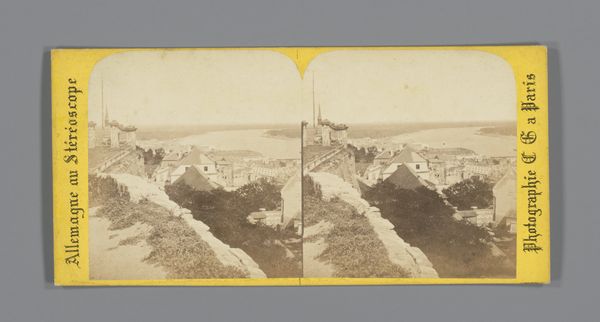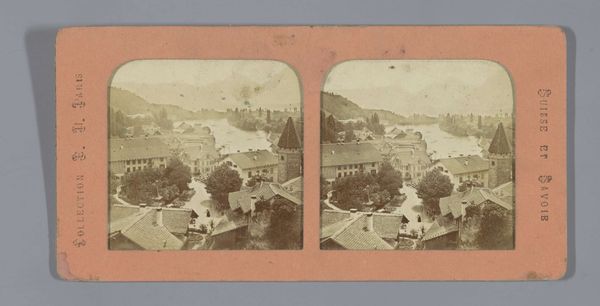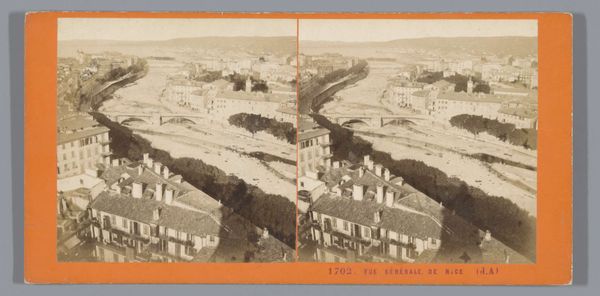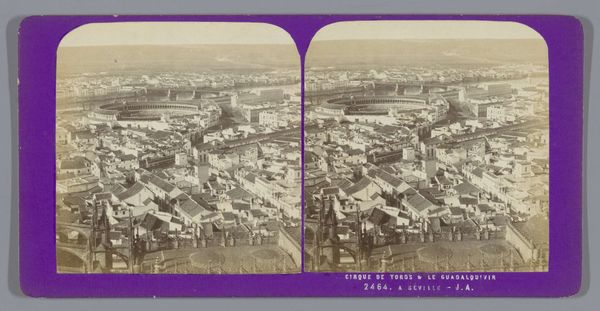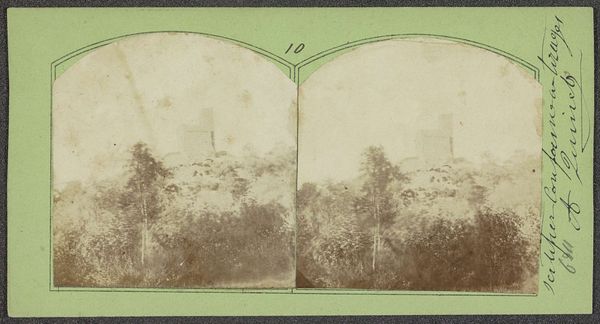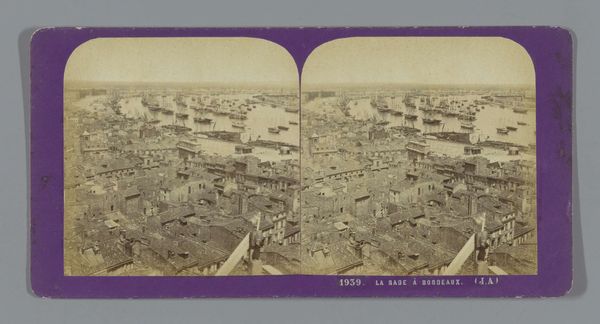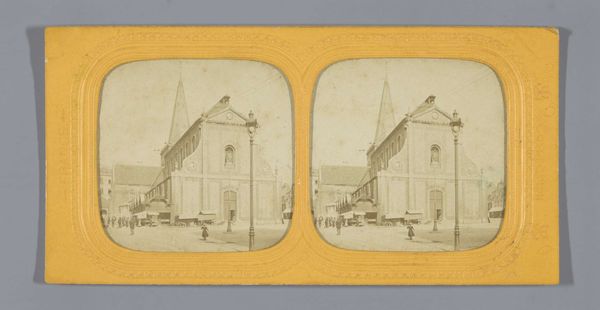
print, photography
# print
#
landscape
#
photography
#
cityscape
Dimensions: height 85 mm, width 170 mm
Copyright: Rijks Museum: Open Domain
Curator: Let's discuss this cityscape by F. Chevalier & A. Champeaux, called "Gezicht op Marseille," created somewhere between 1859 and 1865. It's a photograph, likely a print given the period. Editor: It feels incredibly still, almost frozen in time. There's something haunting about the sepia tones and the density of the urban space. A very palpable sense of being above and apart from that space, a detached gaze. Curator: Absolutely. This perspective, high above the city, became more common as photography evolved and began to document the transforming urban landscape. Marseille at this time was a bustling port city undergoing significant development. How might this view have impacted its inhabitants and viewers of the photograph? Editor: I think that vantage point is key. It's an elevated gaze that speaks to power dynamics, about observing rather than being within. Consider who might have had access to such perspectives—who were the people building those higher structures, and how did their wealth or status shape their worldview, visually and otherwise? Also, consider who these photographers were! Curator: That's an important consideration. Chevalier and Champeaux were commercial photographers. This view was sold as part of a series, for consumption by tourists and perhaps a growing middle class eager to see the world through photography. We must acknowledge that early photography often reproduced social hierarchies and inequalities. Editor: I also can’t help but consider the aesthetic choices here – it may be to do with the technology and resolution available to them at the time but there's an effect where everything sort of blurs together, blurring distinctions between different socio-economic areas, different identities… and almost a sense of homogenization in the relentless rooftops of the space. Curator: An astute observation. Perhaps it unintentionally captured the homogenizing effects of early industrial capitalism, where the texture of life begins to standardize. The towers and architecture also clearly speak to a growing power of religious and governmental institutions, dominating not only the city but the image itself. Editor: Precisely. The photograph becomes a document that reflects both the visible changes in Marseille, but it reveals deeper social dynamics through this medium. And, while it captures a specific time and place, its visual language connects to broader conversations about power, perspective, and the control of space. It speaks to what the social and artistic function photography may serve. Curator: Yes. It's fascinating how this image invites reflection on our own positionality when viewing history—the complexities involved in any act of observation. Editor: A perfect way to think of this print: that observation comes with heavy responsibility.
Comments
No comments
Be the first to comment and join the conversation on the ultimate creative platform.

